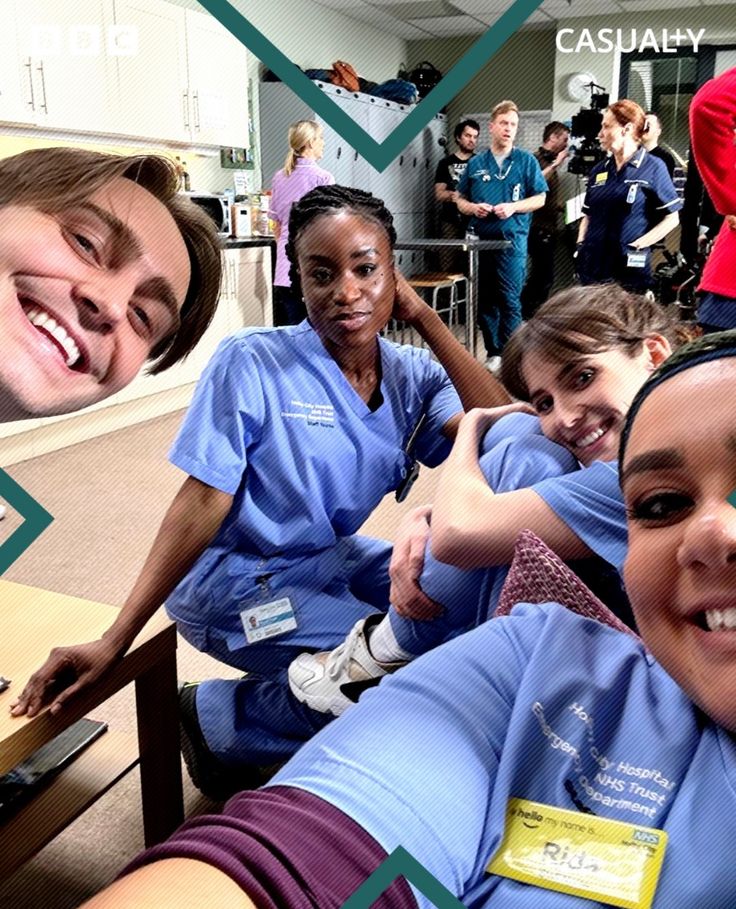Casualty fans were left reeling on Saturday night as the gripping Internal Affairs miniseries reached its emotional and disturbing climax — placing nurse Rida Amaan at the centre of one of the show’s most harrowing and socially charged storylines to date.
In a gut-punch of an episode, beloved nurse Rida, portrayed with heartbreaking vulnerability by Sarah Seggari, suffered a horrific attack at the hands of revered but predatory surgeon Russell Whitelaw, played by Cold Feet’s Robert Bathurst. It was a moment that changed everything — for Rida, for her colleagues, and for viewers who watched the brutal abuse of power unfold in painful detail.

What began as a prestigious job offer quickly morphed into a calculated and chilling campaign of manipulation, control, and ultimately violence. And now, after six hours of filming behind closed doors, Seggari opens up in a raw, powerful interview about the emotional toll, the real-world inspiration behind the scenes, and what Rida’s devastating trauma means for the future of Casualty.
🏥 From Dreams to Nightmare: The Rise and Fall of Rida’s Surgical Aspirations
At the start of Internal Affairs, Rida was a rising star — confident, skilled, and hopeful. Handpicked by Russell Whitelaw, the charismatic face of the hospital’s elite surgical unit, it seemed she was on the brink of a career breakthrough. But what followed was far from success.
Viewers watched with increasing discomfort as Russell’s mentorship twisted into something more sinister. Rida became isolated, gaslit, and increasingly on edge. The power imbalance was palpable, the discomfort escalating week by week — culminating in Saturday’s episode, which depicted a failed attempt by Rida to expose Whitelaw’s abuse, only to be physically and emotionally violated.
🎬 “We Filmed For Six Hours on a Closed Set” — Sarah Seggari on Creating Rida’s Trauma
In an exclusive behind-the-scenes conversation, Sarah Seggari — who has brought Rida to life with empathy and ferocity — shares the emotional gravity of filming the episode’s most harrowing scenes.
“We filmed for six hours on a closed set,” Sarah reveals. “Every reset was a massive reset — not just physically with makeup and costume, but emotionally. There was screaming, there were triggering moments. Everyone on set had to be hyper-aware of what was happening.”
The sequence — in which Russell attacks Rida during surgery — was deeply traumatic, but shot with intense care and precision. “It was a group effort to make that scene as important as it was,” she says. “Everyone was in tune with each other — we all knew the weight of what we were showing.”
🧕 A Violation Beyond Violence: “For Rida, It’s a Racial and Cultural Assault”
What makes this episode even more gut-wrenching is that the assault went beyond physical violation — it was deeply cultural. As part of the attack, Whitelaw violently removes Rida’s hijab — a sacred item in Islam that represents identity, dignity, and faith.
“Hair is sacred in the Muslim faith,” Seggari explains. “Russell ripping off her hijab is catastrophic. It’s not just another assault. It’s a racial and spiritual desecration. It shifts something permanently inside Rida.”
She continues: “That kind of abuse changes how you view yourself, your faith, the people around you. We handled it with real care. I hope we did it justice.”
🎭 Grounded in Reality: The Real-World Echoes of Rida’s Story
Far from a fictional exaggeration, Rida’s story is tragically reflective of real-world abuses of power in healthcare systems globally. Seggari shared that during filming, a real-life case involving a surgeon accused of misconduct made headlines — and the parallels were uncanny.
“While we were shooting, the New York Times published a piece about a surgeon accused of abuse — and it was almost word for word what we were portraying,” she says. “It gave me an even greater sense of responsibility to tell Rida’s story truthfully.”
The actress did extensive research, speaking with real victims of workplace abuse who had left medicine entirely due to trauma. “It’s a silent epidemic. What Rida goes through on-screen — that isolation, the denial, the fear — is very real.”
🎥 “I Used What I Learned From Survivors”
From subtle body language to claustrophobic framing, the production team leaned into psychological realism.
“I learned that victims often gravitate toward walls or corners — places where they can see everyone coming,” Seggari says. “I used that in the way I moved as Rida. There’s this constant state of hypervigilance.”
Director and cinematographers worked through blinds, tight office spaces, and narrow surgical hallways to amplify the feeling of entrapment — visually and emotionally.
🤝 Working With Robert Bathurst: “The Polar Opposite of His Character”
Despite portraying the show’s antagonist, Robert Bathurst won praise from Seggari for his professionalism and care.
“Robert is the polar opposite of Russell,” she laughs. “He’s kind, respectful, incredibly easy to work with. There was no ego — just a shared understanding that we were telling a story that needed to be told.”
She also spoke warmly of the cast’s bond during filming: “We were working in a separate studio for the surgical department. It became our own little community. Olly Rix, Sammy Dobson, Seth Somers — we became a really tight-knit group. That helped on the tough days.”
🔥 What’s Next for Rida? Revenge, Reckoning, and a New Resolve
With just two episodes left in the Internal Affairs miniseries, the question looms: what’s next for Rida Amaan?
Seggari teases explosive developments ahead. “Rida’s worldview has changed. The attack doesn’t break her — it ignites something. There’s rage, there’s grief, but also a quiet strength building. And yes — she’s not done with Russell Whitelaw.”
Does this mean revenge? Justice? A public reckoning?
“She’s playing with fire,” Seggari warns. “But she’s done being silent.”
📺 “Casualty” as Social Commentary: A Drama That Dares to Go Deeper
Casualty has always prided itself on spotlighting urgent social issues — but Internal Affairs marks a bold new chapter. The series isn’t just about hospitals and emergencies — it’s about systemic abuse, power dynamics, and the quiet, hidden stories of those who go unheard.
Thanks to Seggari’s powerhouse performance, Rida Amaan’s journey has become one of the most talked-about arcs in Casualty’s recent history — one that blends emotional authenticity with chilling realism.





